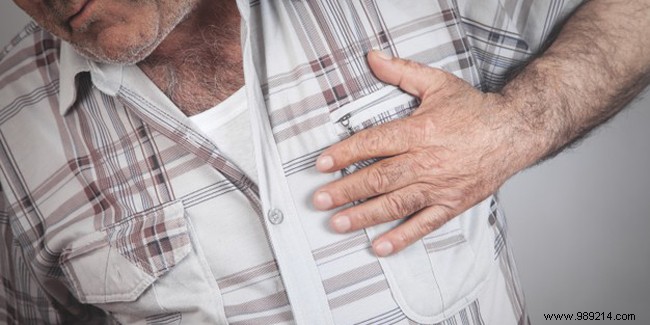
80,000 people are affected by a heart attack (or heart attack) every year in France according to the French Federation of Cardiology. 10% die within an hour and 15% within a year of the heart attack. It is a pathology that requires a rapid reaction, within two hours maximum, to have every chance of being well treated, or even of not dying. This is why it is important to know how to recognize the warning signs of a heart attack.
When we talk about infarction, also called heart attack, we are talking more specifically about myocardial infarction, that is to say a heart muscle that contracts rhythmically and involuntarily. A heart attack is the obstruction of a coronary artery, a blood vessel that supplies this heart muscle, by a blood clot.
Because of this obstruction, the heart muscle no longer receives enough oxygen that the blood brings to it in normal times and necroses, with consequences on the functioning of the heart itself which can go as far as cardiac arrest. .
Many risk factors come into play in the occurrence of a heart attack:a diet too rich in saturated fats, smoking, cholesterol, high blood pressure, diabetes, obesity, but also a sedentary lifestyle, stress or depression again.
Gender (men are more affected by heart attack, even if women are increasingly affected), family history and age are also among the factors that increase the risk of having a heart attack. Indeed, the older you are (after 55), the more the arteries thicken, in particular due to the deposition of cholesterol plaques, and the more clots can occur, particularly in the heart and cause a heart attack.
The signs of an infarction, or heart attack, are recognizable and fairly typical, except for a quarter of myocardial infarctions which are not accompanied by any characteristic signs. In the presence of obvious symptoms, these signs of a heart attack imply to be alerted immediately given the high risk of mortality.
One of the most common and recognizable symptoms is pain in the chest that feels like tightness and is accompanied by a feeling of anxiety and tightness. This sign can come suddenly or in successive waves. This pain is felt for at least twenty minutes and can extend to the throat, jaws, shoulder, arms, and more mainly the left arm, sometimes even to the wrists.
Some patients with a heart attack may also feel very tired, short of breath, palpitations, and sometimes feel unwell. Paleness and sweating may also accompany these warning signs of a heart attack. Other people may also experience nausea or vomiting.
Particular attention should be paid when these heart attack warning signs appear, especially at rest or without making great efforts.
If the feeling of intense chest pain, which may be accompanied by other symptoms described above, lasts over time (more than 20 minutes), even at rest, you must act quickly because an infarction increases over time. As the French Federation of Cardiology points out, “the first two hours are decisive for implementing the treatments that condition life. The gain in survival is all the greater the earlier, more complete and longer lasting the restoration of myocardial blood flow is:reduction in mortality by 50% for treatment during the first hour and by 30% the second .
Stopping all activity is then recommended and it is necessary to call the Samu emergency medical services at 15 as soon as possible, who will judge the decisions to be made according to your condition. The most appropriate medical solution is to unclog the artery as quickly as possible, an intervention carried out in an interventional cardiology unit.